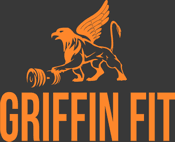Member’s question: Are protein shakes and protein bars worth it, and if they are when is the best time to use them?
by Richard Adams in Uncategorised
You may have heard about or seen these products and wondered the same. Protein shakes come pre-made or in powder form and are typically whey or plant-based. They are a common sight in gym-changing rooms as people refuel after a workout, often with the objective of gaining muscle mass. Protein bars are finding their way onto supermarket shelves and convenience stores – promising to be a healthier form of snack than regular confectionary.
To answer the question, we first need to examine the role of protein in our diet and why protein is featured in these products.
Protein is one of the three macro nutrients (along with carbohydrates and fats). Protein builds and maintains your muscle tissue. Protein is contained in meat, fish, dairy products. Protein in this form is called complete protein, as it contains all of the 9 amino acids that the body needs to build muscle tissue. Protein is also found in plant sources including beans, peas, lentils, seeds, nuts and vegetables. These are called incomplete proteins as they don’t contain all 9 of the essential amino acids. If eaten in certain combinations (during the day, and not necessarily in the same meal), incomplete plant sources of protein can together provide all 9 amino acids and therefore become ‘complete’. There are in addition some plant-based sources of complete protein, notably soy (tofu edamame) and quinoa.
So how much protein do we need in our diet? The Recommended Daily Allowance (RDA) is 0.8g of protein per kg of body mass per day. For me at 88kg this equals 70g. 70g of protein can for example be made up two eggs (6g of protein per egg), a 4 oz chicken breast (26g of protein), 2 oz of tuna (21g of protein) and pint of milk (16g).
However, 0.8g per kg of body mass is widely considered to be at the lower end of the range of recommendations for protein intake, particularly for highly active people or those wishing to build muscle mass. It’s not uncommon for people to target 1.6g per kg or even 2g per kg.
You can start to see that to get to that level of protein intake can become quite challenging, particularly if you’re leading a busy life and are not able to eat or prep all your meals at home. Some additional ‘complete’ protein will come from eating combinations of plant based sources (eg peas and rice), but getting to that 1.6g+ per kg can still be difficult.
And this is where protein shakes (and to a lesser extent protein bars) come in. A typical whey-based protein shake serving contains 25g of protein when mixed with water and will be even higher in protein if mixed with milk. Whey is by-product of cheese manufacturing, and is rich in the amino acid called leucine, which studies suggest is the amino acid most strongly associated with muscle growth. A typical ‘protein bar’ makes a lower contribution to your daily intake as it contains around 10g protein.
Both shakes and proteins can be a useful way to boost your protein intake, particularly if you miss meals, or have a meal with little or no protein. They are however processed foods and are therefore in my opinion inferior to getting your protein from wholefood sources. They can also be high in calories. The shake product I use comes in at 113kcalories per serving (see below), which is quite modest – some can be much sweeter and much higher in calories.

In terms of when they should be consumed, there are many studies out there looking at the impact of consumption timing on hypertrophy (muscle growth). For most of us, I don’t believe it really matters though. I like to have one after weight training, but that’s just a habit and a nice way to get a quick meal and some hydration.
So the bottom line is – be aware of how much protein you are eating and what a healthy amount is for your size and muscle building aspirations. Then see how you can plan your meals to include this amount from wholefood sources. If you need more, or if life gets in the way and you get an interruption to your ‘ideal’ nutrition plan, protein shakes and bars can be a helpful tool to keep your protein levels on track.
